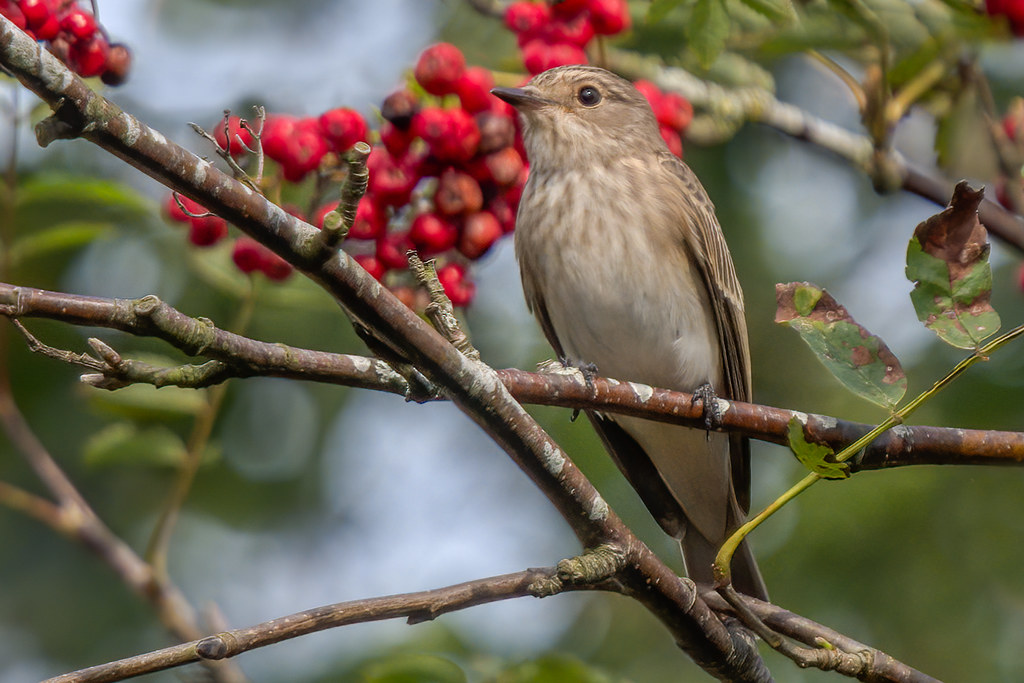
Tim writes: while photographing Ring Ouzels in the Crowden Valley I was distracted by the sound of this Spotted Flycatcher snapping its beak as it tried to catch an insect. Now you can guess what Flycatchers eat as the clue is in the name, and even its scientific name Muscicapa means flycatching. So I had always assumed they were 100% insectivorous. But I was totally amazed when it took flight again, and plucked a berry off the Rowan and wolfed it down. Alas I was too slow to catch it in the act of berry-eating but here it is just a second or two after.
But when I checked Witherby’s Handbook it said the diet is almost entirely insects but is said to take berries such as those of Rowan in the autumn. It also said they have been known to take earthworms, at least twice in hard weather. I also checked BWP (Birds of the Western Palearctic) which states that berries are occasionally eaten during the breeding season, more regularly in autumn. And after an exhaustive list of insects and other invertebrates it lists the various berries it has been reported eating: Barberry, Buckthorn, Dogwood, Rowan, Elder, Honeysuckle, Cherry, Mulberry, Currant, Crowberry and Bramble.
Every day’s a school day. But maybe this is where I find out that I’m the only person in the world who didn’t realise Spotted Flycatchers eat berries.
[registration_form]
I have pix of “our” spotteds with greenbottles in their beaks. They also fly and hover close to grass taking stuff off the leaves or soil. Could be ants? They will also take butterflies, usually later in the summer. They are not all that good at that, and butterflies with flycatcher-beak-shaped bits missing from their hindwings are often seen. I have an image of a flycatcher on the thatcher’s scaffolding proudly holding what is the only flying woodlouse that ever existed
I can thoroughly recommend Bird and Berries by David & Barbara Snow (Poyser 1988) as an amazing source of information about which berries are taken by which birds. To add to the book’s erudition, it is copiously illustrated by John Busby’s wonderful artwork. It is a book I have dipped into on many occasions and one which I would ask to have on a desert island (ahead of the Bible or Shakespeare!) were I ever to be asked…..
Only a couple of paragraphs are devoted to spotted flycatchers but what it says corresponds with your research Tim.
Oh and did you see the sequence in Attenborough’s Seven World’s One Planet series where a spider-tailed viper in Yemen (with a tail end that looks just like a moving spider) catches and eats a spotted flycatcher? Worth a look though not easy to watch if you love spot flys!
https://www.youtube.com/watch?v=7DErwvIjaAE
That image is etched on my mind.
“But maybe this is where I find out that I’m the only person in the world who didn’t realise Spotted Flycatchers eat berries.”
Some years back I reported that the larval stage of a certain insect had been more catholic in their diet than had been previously recorded.
I just view these things as as how little we really know.
isn’t it clear from the name that what they eat is spotted flies?
Just seen a spotted flycatcher eating berries today.